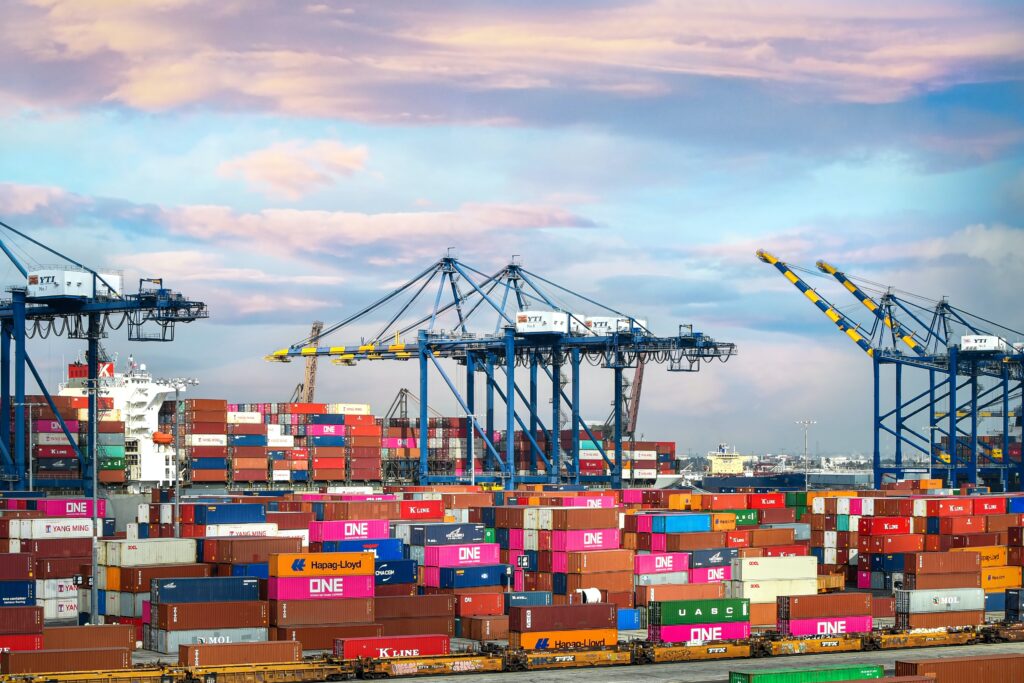In the vast realm of global trade and commerce, the movement of goods across borders and continents is complex and intricate. Ocean Freight Intermodal Drayage stands as a crucial link in this supply chain, ensuring seamless transportation of cargo from ports to inland destinations. This intermodal approach optimizes efficiency, reduces costs, and minimizes environmental impact, making it an indispensable part of the modern logistics landscape.
Intermodal drayage is a transportation service that facilitates the movement of cargo containers between ocean ports and inland destinations, such as warehouses, distribution centers, or rail terminals. It involves the use of various modes of transport, such as ships, trucks, and trains, to transport cargo in standardized containers, ensuring a smooth transition from one leg of the journey to the next. Ocean Freight Intermodal Drayage plays a pivotal role in enhancing supply chain efficiency and supporting global trade.

Streamlining the Supply Chain
Ocean Freight Intermodal Drayage integrates seamlessly into the larger supply chain, enhancing efficiency and reducing transit times. The process begins with the arrival of cargo-laden ships at the port. Specialized equipment is used to unload the cargo containers from the ships and transfer them to designated areas, where they await drayage services. Drayage trucks then transport these containers to nearby intermodal facilities or rail terminals.
At the intermodal facility, containers are loaded onto trains for long-distance transport to inland destinations. This integration of multiple modes of transportation allows for faster transit times compared to traditional over-the-road transport. Upon reaching the final rail terminal, drayage trucks take over once again, transporting the containers to their respective destinations, be it warehouses, distribution centers, or manufacturing facilities.
Cost-Effective Transportation
One of the significant advantages of Ocean Freight Intermodal Drayage is cost-effectiveness. By combining ocean, rail, and road transport, this approach helps reduce transportation costs. Ocean shipping, being a cost-effective mode for long-haul transportation, is integrated with rail and trucking services for efficient and economical inland delivery.
The economies of scale associated with ocean freight, combined with the efficiency of intermodal transport, allow businesses to move a significant volume of cargo at lower costs per unit. Additionally, the reduction in fuel consumption and road congestion through the utilization of rail transport contributes to lower operational expenses, making intermodal drayage an attractive option for businesses looking to optimize their logistics budget.
Environmental Sustainability
In an era where environmental sustainability is a critical concern, Ocean Freight Intermodal Drayage offers a more eco-friendly alternative to traditional transportation methods. Rail transport, a key component of intermodal drayage, is known to be more fuel-efficient and emits fewer greenhouse gases per ton-mile compared to road transport.
By shifting a portion of freight transportation from road to rail, intermodal drayage helps reduce the carbon footprint associated with logistics operations. It aligns with sustainable business practices and contributes to a greener future by mitigating the adverse environmental impacts typically associated with long-haul trucking.
Enhancing Supply Chain Resilience
Supply chain resilience has become paramount, especially in light of recent global disruptions. Ocean Freight Intermodal Drayage adds an element of resilience to the supply chain by providing alternative routes and modes of transportation. In the event of disruptions, such as port congestion, labor strikes, or adverse weather conditions, the flexibility of intermodal transport allows for rerouting and adaptation, ensuring cargo reaches its destination on time.
The interconnected nature of the intermodal system allows for diversification and risk mitigation, making the supply chain more robust and less susceptible to disruptions. Businesses can maintain a level of operational continuity even during challenging times, safeguarding their market presence and customer satisfaction.
Technological Advancements Driving Efficiency
Advancements in technology have played a pivotal role in optimizing Ocean Freight Intermodal Drayage. Digital platforms and software solutions are utilized to streamline the booking process, track cargo in real time, and optimize route planning. Integration of these technologies enhances visibility and transparency across the supply chain, enabling better decision-making and timely responses to potential issues.
Additionally, the use of telematics and IoT devices on intermodal equipment provides valuable data on cargo conditions, location, and status. Predictive analytics and machine learning algorithms further aid in optimizing cargo movements and resource allocation, contributing to greater efficiency and cost savings.
Conclusion
Ocean Freight Intermodal Drayage has emerged as a linchpin in the modern global logistics landscape. By seamlessly integrating multiple modes of transport and leveraging technological advancements, it offers cost-effective, environmentally sustainable, and resilient solutions for cargo transportation. As businesses continue to expand their reach across borders, embracing intermodal drayage is crucial to enhancing supply chain efficiency and meeting the demands of a dynamic and interconnected world.
